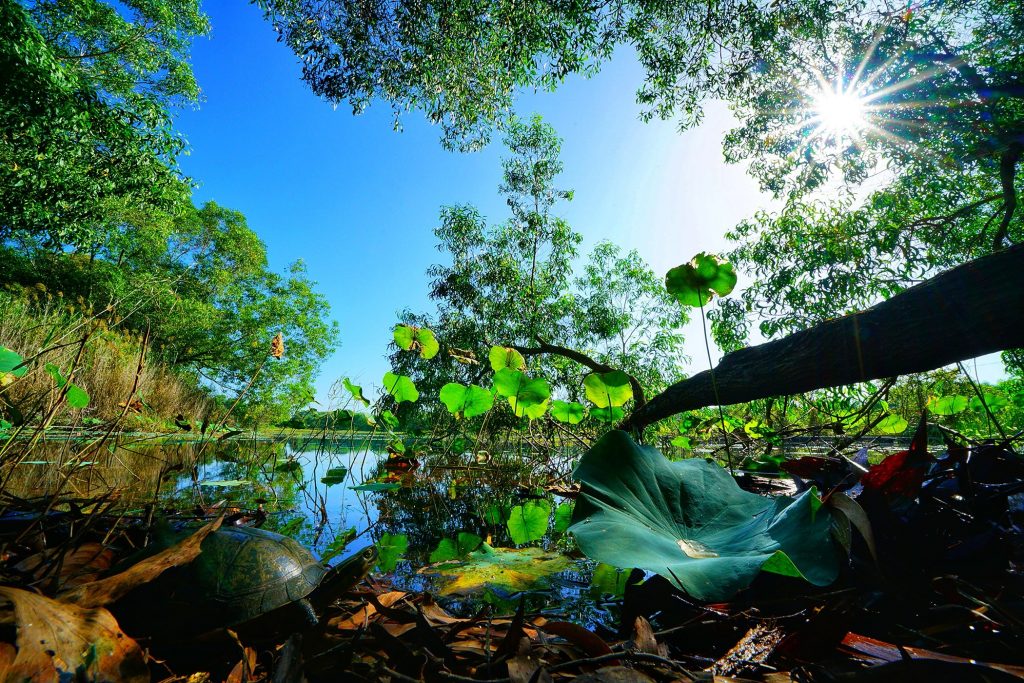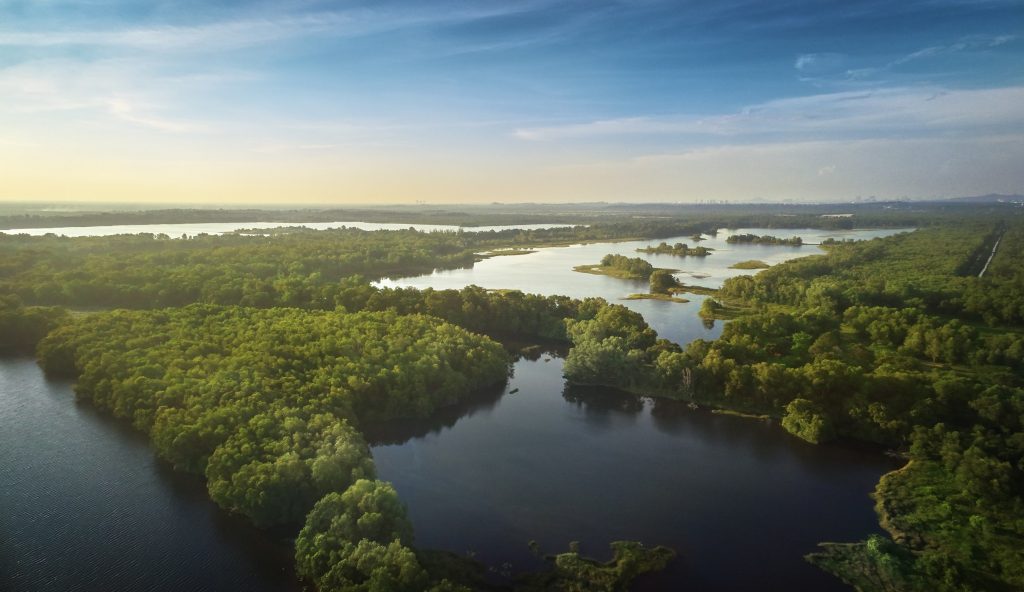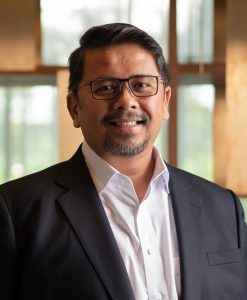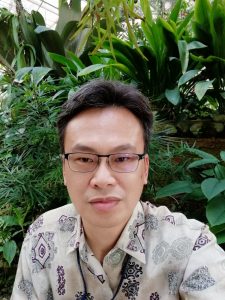A much-needed sustainable balance

The preservation and sustainability of biodiversity in property developments is growing in importance. – MOHD SAMSI SUMAIRI/The Star
Making efforts to retain biodiversity for the future generations
The trials and tribulations experienced in the last few tumultuous years have certainly woken up many governments, organisations and individuals. Add that to the fact that the world population exceeded eight billion people late last year, sustainability has become more than just a buzzword – it has become a matter of survivability.
Considering that the world population was only 2.5 billion in 1950, we have more than tripled that number in less than an average person’s life span. This huge growth has an enormous impact on the earth, from housing needs to the feeding of eight billion people.
Making matters worse, the majority of the population resides in cities and most urban areas have developed most of the land where natural biodiversity used to thrive, whether it is to build homes or turn the land to industrial or agricultural purposes. Currently 4.4 billion people reside in cities. Malaysian cities are no exception. Greater Kuala Lumpur, for example, expects to hit the 10 million mark in 2032, from the current 8.62 million. For perspective, the population of Kuala Lumpur in 1950 was 262,000.
While increased human capital and economic growth are benefits of a growing world population, it also makes it more difficult to achieve inclusive and sustainable development in the future. If things continue as they are, we will have exhausted all of the resources and available space on our planet, which is all we have.
Cities contribute significantly to greenhouse gas emissions and utilise close to two-thirds of the world’s energy, thus depleting the environment’s natural resources.
The loss of biodiversity is mostly attributed to rapid urban growth. Urbanisation caused habitat changes, fragmentation, deterioration of environmental conditions and micro-climatic changes. These effects lowered species variety and population size and ultimately raised the risk of extinction for both flora and fauna. Loss of biodiversity frequently has a domino effect on how an ecosystem functions, affecting things like pollination, pest management and nutrient cycling.
On a brighter note, more and more property developers are toeing the sustainability agenda, playing more actively in their role in becoming a platform where people can experience how sustainability is being applied be it the materials used, waste and energy consumption and the use of nature-based solutions.
The experience could encourage people to live sustainably and raise the expectations for others to follow.
In the 2021 Global Sustainability Study, 60% of customers from all continents rated sustainability as an important factor in their purchasing decisions. As more young people enter the housing market as buyers and renters, this trend is anticipated to continue.
Today’s purchasers prioritise investing in buying a home in an area that is in sync with nature and where social potential is abundant over location, price, accessibility, and overall, convenience.
Joining the bandwagon
That more developers are going on the sustainability drive is a good thing. Among them includes Gamuda Land with its Gamuda Cove project in the Kuala Langat district.
The project, which resides next to the 1,111-acre Paya Indah Discovery Wetlands, will now house a Wetlands Arboretum along with many other sustainable aspects, to ensure that the wetlands continue to thrive.
Gamuda Land has taken the initiative to undertake a wetlands arboretum project to educate Gamuda Cove’s residents and visitors and foster a greater appreciation for the wetlands as well as the peat swamp forest, said Universiti Malaya (UM) Faculty of Science’s Institute of Biological Sciences senior lecturer Yong Kien Thai.
He said the project undertaken exceeds that of an arboretum as there were many aspects added to the project.
“An arboretum is a collection of trees while a wetland arboretum is more like a wetland garden or water garden,” he explained, pointing out that the buffer areas between the Gamuda Cove development and the peat swamp forest are planted with native trees.
“As long as they do not interfere with the peat swamp forest which might affect the pH (potential hydrogen) levels, the environment should not degrade further,” he said, pointing out that even before Gamuda Land came into the picture, the peat swamp forest had already been degraded.
“These peat swamp forests are important as they lock in carbon due to their low pH levels. If these forests are destroyed or developed over, the carbon will be released adding to the carbon levels in the environment and speeding up climate change,” he said.

An aerial photo of the Paya Indah Discovery Wetlands adjacent to Gamuda Cove.
Keeping with demands
Thankfully, other property developers are treading down the same paths as they develop more townships to keep up with housing demands. Maintaining biodiversity is important for a healthy ecosystem for the community, and thus a key area of focus in UEM Sunrise Bhd’s sustainability agenda, said its chief executive officer Sufian Abdullah.
“We understand the impact that our developments can affect local ecosystems and are committed to mitigating any adverse effects. Through sustainable land use and development practices and preserving natural habitats, we aspire to promote the long-term health and sustainability of local ecosystems, especially in the areas we operate in.
“Maintaining biodiversity is part of our grander ESG goals, covering not only the environment but also social and governance aspects of maintaining and spreading awareness of it,” he said.
“Our designers, engineers and other professionals will use the SDDG (Sustainable Development Design Guidelines) as a reference guide to ensure that our designs are socially responsible. We actively promote biodiversity preservation, with involvement in the SIREH Park project, where we target to plant 25,000 trees to help sequester 300,000 kg of carbon dioxide per year.
“We also planted 1,738 trees in SIREH Park and have collaborated with government agencies, NGOs and corporations in tree-planting activities. We also promote green spaces in urban areas and have planted 316 trees in the Kiara Bay development in 2022. On the social front, we also raise awareness of biodiversity to our communities and customers through community engagements,” he said.
On the same bandwagon, Eco World Development Group Bhd (EcoWorld) have also dipped their feet into the biodiversity waters. Their Eco Grandeur township is located in the Asian-Australasian Flyway, which is of global significance for avian biodiversity as a substantial population of migratory birds use the flyway corridor to escape winter.
“In 2017, we began working closely with an academic and environmental researcher to develop a Biodiversity Master Plan to ensure the migration pathway is not disrupted. The master plan was later expanded to also include the creation of a network of terrestrial and aquatic Biodiversity Education Ribbons (BER) at various localities within the township.
“Apart from contributing towards the enrichment and preservation of native biodiversity, BER can serve as open classrooms to create awareness and educate residents and visitors to Eco Grandeur on the importance of biodiversity conservation. It will also offer a 2km experiential learning opportunity with walking trails amidst nature,” said EcoWorld deputy chief executive officer Liew Tian Xiong.
Work on BER is currently underway and is expected to be opened in stages this year, he said. “Right now, nature lovers and the local community can find out more about it by visiting the Green Wall at the EcoWorld Gallery @ Eco Grandeur or the 62-acre Dragonfly Park at the township,” he added.
Sime Darby Property is also successful in the biodiversity area by anticipating customer trends and taking feedback into account when making decisions about its operations for its City of Elmina.
The 6,500-acre township is the focal point of the property developer’s greatest rewilding initiatives, which aim to conserve biodiversity and restore ecosystem health by preserving key wild or wilderness regions.
With funding assistance from Yayasan Sime Darby, the real estate player collaborated with the Tropical Rainforest Conservation and Research Centre to manage the conservation initiatives at the Elmina Rainforest Knowledge Centre.
Sime Darby Property can have a consistent supply of native forest trees for planting in its townships thanks to the ERKC and its adjoining Elmina Living Collection Nursery, as well as allowing outside parties to carry out forestry initiatives.
A total of 210,000 trees, of which 10% will consist of trees that are assessed as endangered, rare and threatened by the IUCN Red List of Threatened Species, are expected to be planted throughout the City of Elmina by 2040. Almost 50,000 trees have already been planted in the municipality, 6,579 of which have outstanding conservation potential.
With property developments such as these, the biodiversity in many places may continue to thrive alongside growing townships.
The quest to achieve net zero emissions
The global push towards achieving net zero greenhouse gas emissions has gained momentum in recent years, with an increasing number of countries announcing their pledges to achieve this goal. Malaysia has also joined this movement and has pledged to become a net zero greenhouse gas emissions nation by 2050 at the latest. To achieve this, the Malaysian government has set a target to reduce carbon intensity by 45% by 2030, compared to the levels of gross domestic product (GDP) in 2005.
As part of its efforts to prepare for the global energy transition, the government has been proactive in introducing forward-thinking policies. One such policy is the National Energy Policy 2022–2040 (DTN 2040), which was introduced on September 19, 2022. DTN 2040 aims to achieve the Low-Carbon Nation Aspiration by increasing the proportion of clean and sustainable sources in the country’s primary energy mix. This presents opportunities for both the public and commercial sectors to explore new growth in low-carbon paths.
The policy recognises the vital role that energy plays in driving socioeconomic development in Malaysia’s key industries. The move towards net zero has the potential to create new opportunities for economic growth and job creation, provide dependable and affordable energy, and maximise the value of the country’s domestic oil and gas resources. The policy also serves as a guide for industry participants and decision-makers to strike a balance between sustainability, affordability, and energy security.
However, experts warn that the pledges made by governments to date, even if fully achieved, are not enough to bring global energy-related carbon dioxide emissions to net zero by 2050. This means the world may not be able to limit the global temperature rise to 1.5 °C, which is essential to mitigating the worst effects of climate change.
Therefore, it is crucial for governments and stakeholders to accelerate their efforts and work together towards achieving net zero emissions as soon as possible. This will require strong leadership, collaboration, and investment in research and development to identify new and innovative solutions. The transition to a low-carbon economy is inevitable, and those who are prepared and embrace the challenge will be well-positioned to reap the rewards of a sustainable future.

“Maintaining biodiversity is part of our grander ESG goals,” said Sufian.

“These peat swamp forests are important as they lock in carbon,” said Lee.

Work on BER is currently underway and is expected to be opened in stages. said Liew.
Stay ahead of the crowd and enjoy fresh insights on real estate, property development, and lifestyle trends when you subscribe to our newsletter and follow us on social media.
